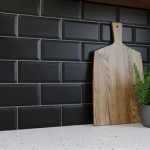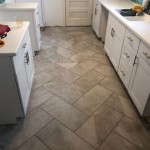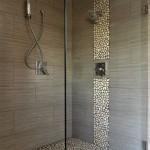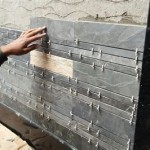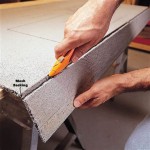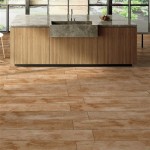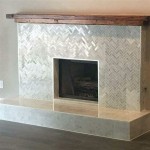Do You Have to Use Cement Board Under Tile?
When embarking on a tiling project, whether it's a bathroom, kitchen, or any other area, the question of whether to use cement board arises. Cement board, also known as backer board, is a rigid, water-resistant panel that serves as a substrate for tile installation. While it is not always mandatory, the decision to use cement board depends on several factors, including the location of the tile, the type of tile, and the existing substrate.
Understanding the Purpose of Cement Board
Cement board plays a crucial role in tile installation by providing a stable and durable base. It offers the following benefits:
- Water Resistance: Cement board is highly resistant to water penetration, making it ideal for areas exposed to moisture, such as bathrooms and shower stalls.
- Durability: It is a robust material that can withstand heavy loads, preventing cracks and movement in the tile installation.
- Fire Resistance: Cement board is fire-resistant, contributing to the safety of your home.
- Smooth Surface: Cement board provides a smooth and even surface for tile installation, ensuring a professional and consistent finish.
These properties make cement board a preferred choice for many tile applications, particularly in areas where moisture, durability, and safety are paramount.
When Cement Board is Necessary
While cement board is not always required, it is strongly recommended in the following situations:
1. Wet Areas
In areas that experience frequent moisture exposure, such as bathrooms, showers, and kitchens, cement board is essential. It prevents water from seeping behind the tiles, minimizing the risk of mold growth and structural damage.
2. Over Existing Walls
When installing tiles over existing walls, especially those with drywall, cement board is advised. Drywall is not as water-resistant as cement board, and using it as a tile substrate can lead to water damage and potential mold issues. Cement board provides a more durable and water-resistant barrier, protecting the underlying wall structure.
3. High-Traffic Areas
In areas that experience heavy foot traffic, such as entryways, hallways, and kitchens, cement board helps to prevent tile movement and cracking. Its robust nature can withstand the constant pressure and movement of heavy foot traffic.
4. Large Tile Formats
When using large format tiles, which often weigh more than standard tiles, a stable and durable substrate like cement board is crucial. It provides adequate support to prevent the tiles from sagging or cracking under their weight.
Alternatives to Cement Board
In certain situations, alternatives to cement board may be considered, depending on the specific project requirements:
1. Moisture-Resistant Drywall
For areas with less moisture exposure, moisture-resistant drywall can serve as a suitable alternative to cement board. While it is not as water-resistant, it offers a cost-effective option for areas that are not subject to excessive water exposure.
2. Tile Backer Boards
Specialty tile backer boards, such as fiberglass-reinforced cement boards, are increasingly popular for their lighter weight and ease of installation. They offer similar benefits to traditional cement board but may be more convenient in certain applications.
It is essential to carefully assess the specific project requirements and choose the appropriate substrate for the desired outcome. Consulting with a professional tile installer can provide guidance and recommendations based on the specific circumstances.

How To Install Cement Board The Home Depot

How To Install Cement Board The Home Depot

How To Install Cement Board On A Floor Diy Family Handyman

Tile Backerboard Material Options Fine Homebuilding

How To Install Hardiebacker Cement Board On Floors James Hardie Pros

Cement Backerboard Floor Tile Installation Uncookie Cutter

How To Install Cement Board The Home Depot

How To Install Cement Board In 3 Easy Ways Q1 2024 Infographic

Thinset Under Cement Board Yes Or No Ord Ceramic Tile

Easily Install Cement Board To Prep For Tile Installation
Related Posts

